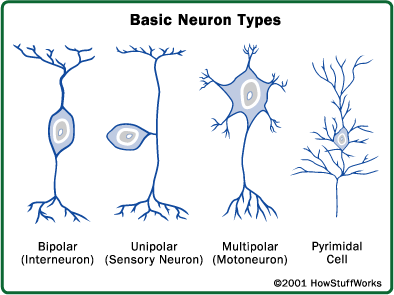

Nervous System
What makes the blue whale tick
This section looks at the size and make up of the blue whales central nervous system that is incredibly complex and keeping true to blue whales size rather large.
The first metric used in determining an organisms "inteligence" often comes down to the overall size of the brain itself, and what parts are larger then others. This metric is called encephalization quotient or EQ for short. The EQ simply put is the ratio between body mass and brain mass, Human come in at around 7.5 making our brains much larger for our bodies, when other mammals such as dogs come in at around 1.0-1.4.
When it comes to Cetacea (whales) they have an EQ around 3 to 6 with the blue whale not necessarily being the largest for once, coming in around 4.3.
But one of the most mindboggling things about the blue whale nervous system is the sheet length of some of their unipolar sensory neurons. In all mammals these axons run from the sensory preceptors to the brainstem at the base of the head.
This means that the axons of these nerve cells can become incredibly long, being up to 2 meters in human beings. But when you put that to the scale of the blue whale it starts to become crazy.
Being as long as 100 feet long from tail to snout, that means there are axons in the whales bodies that are upwards of 80 to 90 feet long in some instances.
But that isn't even some of the more fascinating aspects of blue whales nervous systems.


This graph shows the blue whale being at the upper end of the scale when it comes to body vs brain mass, but remember that EQ is a ratio. Which is why a porpoise who is lower down on this graph, has a higher EQ then a blue whale because the ratio is higher. As is much much much smaller then the blue whale, but its brain is much larger when compared to its body then the blue.


Blue whales are a member of a type of baleen whales called the Rorquals that have an adaptation that allowed then to inflate the tissue of their lower jaw when feeding. (to learn more about this adaptation click the button at the bottom right of the page). But what happens to the nervous tissue when this part of the whale inflates to such a sheer size. Well researchers have found that the nerves in this portion of the whale have the ability to stretch and become elastic.
The axons when the mouth isnt inflated are essentially coiled and compressed inside their sheath. So that when the whales mouth inlfates with water during feeding, the sheath stretches and the
axons inside the protective sheath uncoil to their true length. This evolution is perhaps one of the more fascinating aspects of the whales nervous system. This not only allows the whale to have feeling in their mouth but also protects the axons from tearing during extended feeding sessions.
